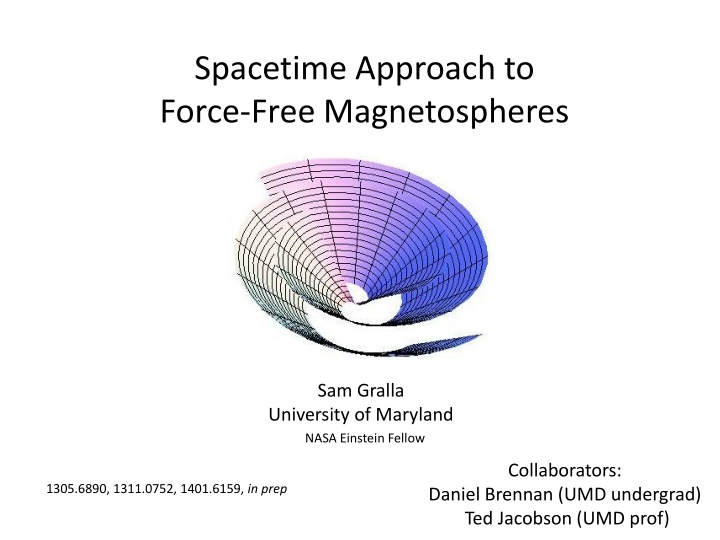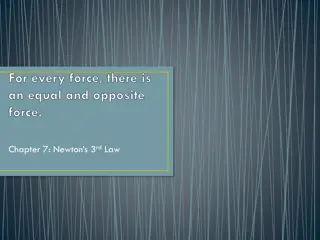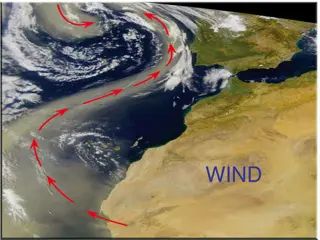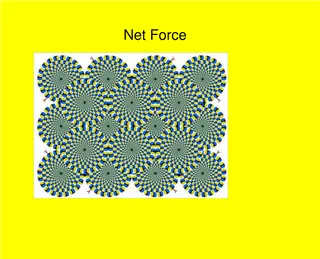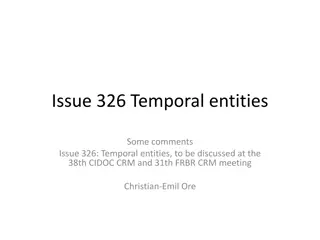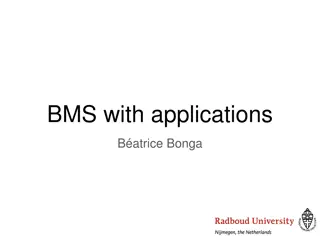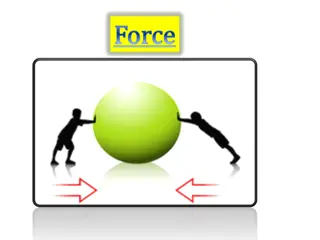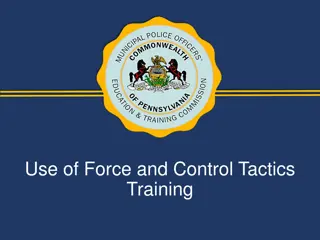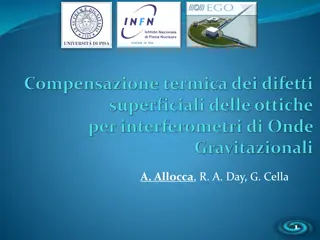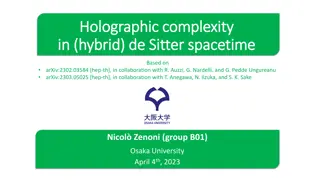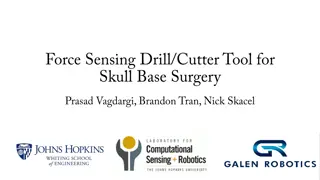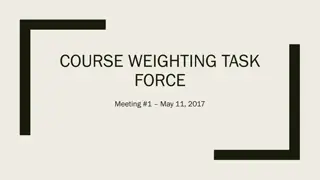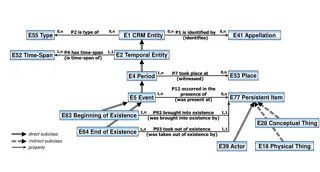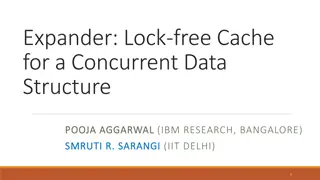Spacetime Approach to Force-Free Magnetospheres
A detailed exploration of force-free magnetospheres using a spacetime approach, focusing on exact solution families, observations, and null-current solutions. Collaborative work by Sam Gralla from the University of Maryland, NASA Einstein Fellows, and collaborators. Presentation of findings, implications, and applications in astrophysics.
Download Presentation

Please find below an Image/Link to download the presentation.
The content on the website is provided AS IS for your information and personal use only. It may not be sold, licensed, or shared on other websites without obtaining consent from the author.If you encounter any issues during the download, it is possible that the publisher has removed the file from their server.
You are allowed to download the files provided on this website for personal or commercial use, subject to the condition that they are used lawfully. All files are the property of their respective owners.
The content on the website is provided AS IS for your information and personal use only. It may not be sold, licensed, or shared on other websites without obtaining consent from the author.
E N D
Presentation Transcript
Spacetime Approach to Force-Free Magnetospheres Sam Gralla University of Maryland NASA Einstein Fellow Collaborators: 1305.6890, 1311.0752, 1401.6159, in prep Daniel Brennan (UMD undergrad) Ted Jacobson (UMD prof)
Force-Free Electrodynamics Magnetically dominated plasma Pulsars, AGN,
Exact Solution Family Brennan, SEG, Jacobson 2013 SEG & Jacobson 2014 free function of three variables number
Talk Outline How did we find this? spacetime approach pulsars, general asymptotic behavior of free magnetospheres? What is it good for? push the spacetime approach as far as possible What else have we done? Field sheet picture No ingrown hair theorem varia In this talk:
The Michel Monopole Michel 1973 from Beskin 2010 In split form, can regard as a) toy model for dipole pulsar or b) model for asymptotic pulsar magnetosphere
An Observation The Michel monopole has charge and current satisfying In spacetime language, the charge-current four-vector is lightlike or null. This observation is powerful. Null structure is fundamental to spacetime.
Menon & Dermer 2007 Family of stationary, axisymmetric exact solutions in Kerr Parametrized by free function ( ) E2=B2 These solutions also have null four-current! (Along the so-called principal null congruence(s) of Kerr.)
Null-Current Solutions We assumed null current and used the Newman-Penrose formalism, which is designed to leverage null structure. (Brennan, SEG, Jacobson 2013) We found the general solution with null, radial current in flat, Schwarzschild, and Kerr (radial=PNC) spacetimes. We later re-derived the solutions using the language of differential forms, where the calculations are simple and the physical content is clear (to the forms-initiated!) (SEG & Jacobson 2014) forms example:
New Solutions The general outgoing solution with radial, null current in flat spacetime is magnetic monopole outgoing Poynting flux non-stationary & non-axisymmetric! (Also valid in Schwarzschild, and we found analogous solutions in Kerr) Michel monopole: 3+1:
Three Applications 1. Generalized monopole 2. Asymptotic magnetosphere 3. Non-scattering waves around black holes
1. Generalized Monopole Conducting sphere rotates arbitrarily Michel s rotating monopole is (No E-field in rotating frame) Whirling monopole: (No E-field in whirling frame) ( ) Given , whirling magnetosphere is Precession: a circular whirl The flux agrees with the instantaneous Michel solution. Can model (e.g.) a pulsar glitch
2. Asymptotic Magnetosphere Conjecture: If outgoing boundary conditions are imposed at infinity, then for any interior boundary conditions the current will be asymptotically null and radial. Related to Michel s minimal torque condition Numerical evidence from Kalapotharakos et al 2011 Evidence against from Tchekhovskoy et al 2013? (any other evidence for/against?) If so, these exact solutions describe the generic far-field behavior of force-free magnetospheres. Could model outgoing kink in field lines originating from a glitch or catastrophic event.
3. Non-Scattering Waves Ingoing version in Schwarzschild (Eddington-Finklestein coordinates) , The free function can specify an initial wave packet and the wave just goes in. This was shocking to us! All other kinds of radiation scatter off the black hole. In particular there are no vacuum electromagnetic waves like this.
1. Generalized monopole 2. Asymptotic magnetosphere 3. Non-scattering waves around black holes
The Spacetime Approach SEG&Jacobson 2014
Black Hole Split Monopole (Blandford-Znajek solution) Promote the Michel solution to linearized Kerr (BL coordinates), Solves equations provided . (Easily checked in forms approach) Regularity on horizon implies This first order piece is enough to see the energy extraction.
Accelerating Monopole (Brennan & SEG 2013) Assume null current along the light cones of an arbitrary timelike worldline. moving magnetic monopole Poynting flux Extra power radiated due to acceleration:
Euler Potentials & Field Sheets Carter 1979, Uchida 1997 For a degenerate field F, ( ) Surfaces of constant : worldsheets of magnetic field lines
Field sheet metric (SEG&Jacobson 2014) The spacetime metric induces a metric on each field sheet. Particles* move on timelike geodesics of the field sheets Alfven wave group velocity follows field sheet null geodesics In stationary axisymmetry, every field sheet has a Killing vector, field line angular velocity Thus there is a conserved quantity along field sheet geodesics. This is the quantity used to calculate particle wind (e.g. CKF) Where k is null is called a light surface. It s a causal boundary for particle and Alfven propagation. *neglecting cyclotron, drift, and curvature radiation reaction
No Ingrown Hair (MacDonald&Throne 1982; SEG&Jacobson 2014) An astrophysical black hole can t have its ``own magnetic field. (vacuum, stationary, axisymmetric, no charge = no magnetic field) Force-free generalization: no closed field lines allowed not allowed gray: not force-free
Extremal Znajek Condition In the stream equation formulation for stationary, axisymmetric force-free fields in Kerr, there is a regularity condition on the horizon (Znajek 1977), This condition is not sufficient for regularity in the extremal case a=M. There we have an additional condition (SEG&Jacobson2014),
Stream Equation for No Poloidal Field The usual Grad-Shafranov approach is built on the assumption of a non- vanishing poloidal magnetic field. If the field vanishes you have a different stream equation (SEG&Jacobson 2014) Chi is the electrostatic potential, See related work of Contopoulos (1995)
The Spacetime Approach SEG&Jacobson 2014
We are taking a spacetime approach to force-free magnetospheres. I presented: 1. Time-dependent, non-axisymmetric exact solutions: Null current (J= c) superposed monopole and Poynting flux Do these give the general outer magnetosphere? 2. Varia Field sheets, symmetries and particle wind No ingrown hair theorem Accelerated monopole Extra Znajek condition for extremal Kerr Stream equation for no poloidal field
